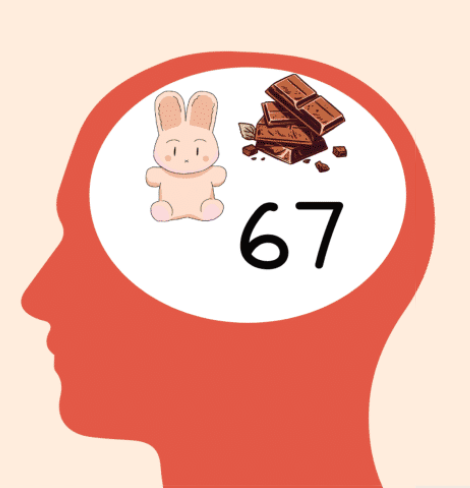Social media is responsible for a great amount of good in western culture. From exposure for social movements to everyday life hacks, social media, specifically TikTok, X, and Instagram, have earned a somewhat positive reputation.
However, these three platforms are also known for containing massive amounts of destructive content, recklessly influencing the impressionable minds of the world’s youth. With the coming of the new year, social media’s control on young minds needs to come to an end.
Teenagers are known for their susceptible minds, which results in the need for good role models in their developmental years. However, social media has the potential to do the exact opposite of this, opening doors of negative and harmful views to the youth on it.
With any social media app comes the addictive and often dangerous product of viral trends. These trends usually involve performing a crazed action such as vandalism, theft, or even self-harm.
For example, in September of 2021, the “Devious Lick” challenge enticed teens to steal items from school property, ranging from small objects, like pencils or books, to more costly items such as soap dispensers and even urinals. At one point, entire SMART board projectors and road signs were taken.
With each “lick” came another, each more impressive than the last. Every time someone posted a “lick”, another kid would try to beat it as if it were a competition. Not only did this behavior disappoint parents and school administration, but it highlighted the stupidity of the students who actively used social media.
Another questionable trend that occurred during fall of 2022 was the “NyQuill chicken” recipe. Teens took raw chicken and used NyQuill, an over-the-counter medication meant to be used responsibly, as a broth to boil the chicken in. The trend got so much traction that the Food and Drug Administration (FDA) had to release a statement discouraging the act.
The trend raised incredible questions on adolescent activity on social media. Common sense tells a person that using more than the listed dose of a medication could be dangerous, let alone the whole bottle to boil chicken in. What if the problem is not the lack of common sense, but perhaps a gap in critical thinking which causes teens to follow the crowd into idiocy?
Social media is a melting pot of differing opinions, political views, and overall views on life. In a time where young adults are trying to establish their values, morals, and opinions on important topics, this could serve to be very beneficial, or very crippling.
The hostility of social media users during online debates and arguments has greatly impacted teenagers, resulting in some becoming less accepting or less willing to try and understand different perspectives. Paired with cancel culture essentially telling people what is right and wrong, the free thinking of teenagers is at risk of being harmed.
The state in which social media leaves teens is similar to a zombie, ready to be brainwashed. The rapid consumption of media in the form of short videos, tweets, and edited photos is harmful to the growing brain, frying dopamine receptors and shortening attention spans. The consequences of this could be detrimental to western society as a whole.
Teens no longer enjoy natural dopamine activities such as reading, physical activity, and creative thinking activities. Attention spans decreasing will cause learning to be harder, affecting how many young adults go to college, or even graduate high school. Eventually, all kids will want to do is aimlessly scroll on social media on the daily.
The extensive use of social media is worsened much more by the content that floods it, and will only get worse as time goes on. The non genuine and unauthentic nature of social media has proven to be diminishing teens’ mental health and social capabilities.
The anonymity of social media users allows teens to be more comfortable not being seen, incentivising a sense of complacency in not being social. This hinders the in-person social skills in lots of teens, leading to loneliness and even depression. Loneliness and depression only lead back to the extensive use of social media, creating a cycle which many teens are trapped in today.
Teen loneliness and depression could also be linked to self confidence issues caused by social media. Platforms like Instagram and TikTok use algorithms that boost objectively attractive people and lifestyles, however, both of these could, and have been inflated with false narratives and inauthentic practices that portray an unattainable ideal.
Practices like applying filters and editing photos cause teens, specifically young girls, developing body image issues, prompting them to feel like they need to look like a 20-year-old supermodel at the age of 14. Online influencers who flaunt their lavish lifestyles cause teens to be ungrateful for what their parents have given them, or jealous of a lifestyle that, for most, can’t be theirs.
Depression is not the only consequence of these lies. Destructive behaviors such as starving oneself to reach a lower weight or taking a hammer to one’s face in an attempt to gain a sharper jawline are products of this madness.
Although the outside world classifies most of these behaviors as abnormal, malicious practices and many more odd behaviors have been normalized online. Revisiting the editing of photos, such a deceitful act has been minimized to a part of the social media process.
Body modifications like botox, lip filler, and nose job have been normalized and in fact encouraged for young women to get. This only leads to teens making irrational decisions as soon as they turn 18, even if those decisions weren’t justified by their own thought process.
In the scope of normalization, social media has only eased access to explicit content for younger teens, making it seem less taboo. Whether it be through poor moderation, users exploiting the system, or even poor restriction methods, explicit content is everywhere on social media.
Not only does this contribute to the frying of dopamine receptors, specifically in young men though the viewing of this material, but it also invites unwelcome content which no underage child should be seeing.
The age of social media has brought great harm to society’s growing teenagers, and will only bring more destruction in the future. If parents don’t take control and raise their kids right, the next generation will be filled with little brats who have no morals and no sense of right or wrong.








